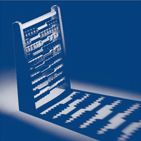Buy to Let Property Expenses
Background
There are a number of forthcoming changes to the taxation of buy to let residential property, particularly where they are owned by individuals, partnerships or trusts. Today, we will cover three particular aspects – wear and tear expenses on the property, loan interest and Stamp Duty Land Tax.
Wear and Tear Allowance
Up to 5 April 2016, where the property is let fully furnished the landlord can claim a deduction based on 10% of the rents (after deducting any council tax or other rates which would normally be paid by the tenant). In return for this deduction, the replacement of items such as carpets, furniture, crockery, linen, rugs, free standing white goods etc. is not deductible. It was almost always more beneficial to claim the 10% allowance, rather than the replacement cost.
From 6 April 2016, the Wear and Tear Allowance has been abolished so that relief will be given when replacement expenditure is incurred. Therefore any landlords considering expenditure should wait until after 6 April 2016 so that they will receive relief in full.
The cost of the initial purchase of these items in a new rental property is capital expenditure and will not qualify for relief. Relief is only for the cost of replacement items.
Please note that furnished holiday lets, commercial property and property where rent a room relief is claimed cannot receive the Wear and Tear Allowance so the changes do not apply.
Loan Interest
It has been widely publicised that loan interest and related costs are being restricted from 6 April 2017 for unincorporated landlords of residential buy to lets. The changes are being phased in over four years at the end of which, at most, only 20% tax relief will be given for these costs.
Relief will be provided as a reduction in the total tax liability, subject to certain conditions. For example, if a tax liability arises as a result of savings or dividend income, then the balance cannot be reduced by the finance costs.
The rules governing interest relief can still be relatively generous depending on an individuals circumstances. For Income Tax purposes for example, interest on a loan used to buy land or buildings to rent out or to fund property repairs, improvements or alterations to a rental property, or even to repay capital to the landlord under the right circumstances, can be eligible for relief. This can include family loans, overdrafts and Hire Purchase interest.
Stamp Duty Land Tax (“SDLT”)
SDLT on residential property is increasing from 1 April 2016 where the purchasers are companies, trusts or other unincorporated landlords. A 3% surcharge is added to the usual percentage so that the purchase can cost significantly more. There may be exemptions where a large number of properties are purchased. There is also an exemption for main residences as long as it is the only one. Properties costing £40,000 or below will receive a 0% rate of SDLT.
Where individuals are simply selling one house and purchasing another, if they own two houses at any point for example because the transactions do not complete on the same day, then the higher rates of SDLT will apply. This has a significant cash flow impact, although a refund can be claimed if one residence is sold within 18 months. The proposed rules will also affect Furnished Holiday Lets.
There is still some uncertainty over the operation of the rules as the draft legislation has not yet been released and will not be formally enacted until later in the year, although it will take effect from this April.
The tax treatment of residential property continues to change significantly, if you are unsure if an expense qualifies for relief or if the higher rates of SDLT apply to your transaction then please contact our Tax Director, Jenny Marks.
To see our other news items please visit our Muras Baker Jones – Blog.



